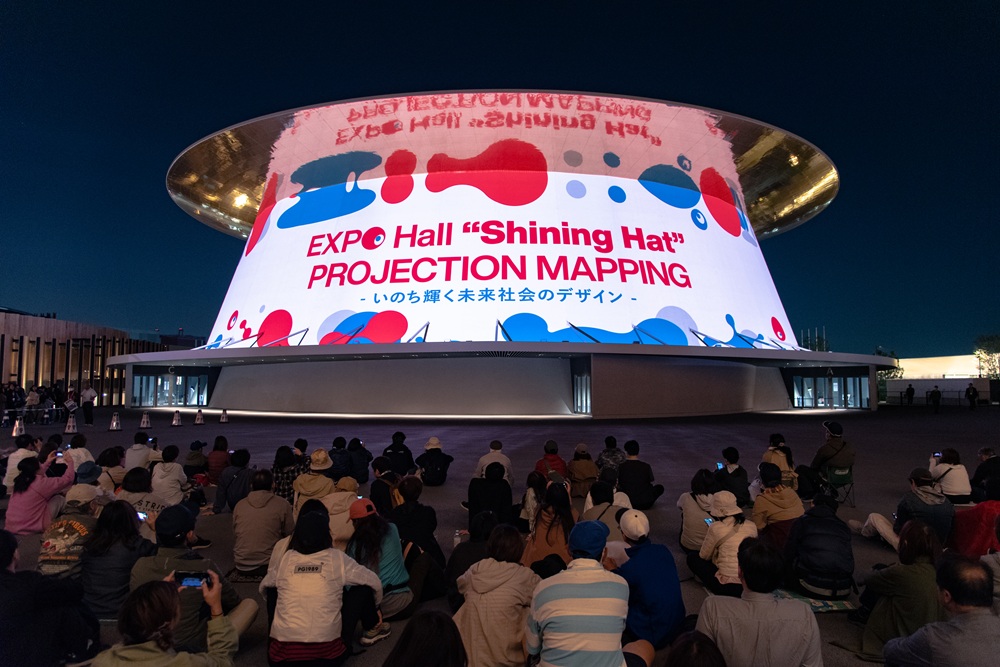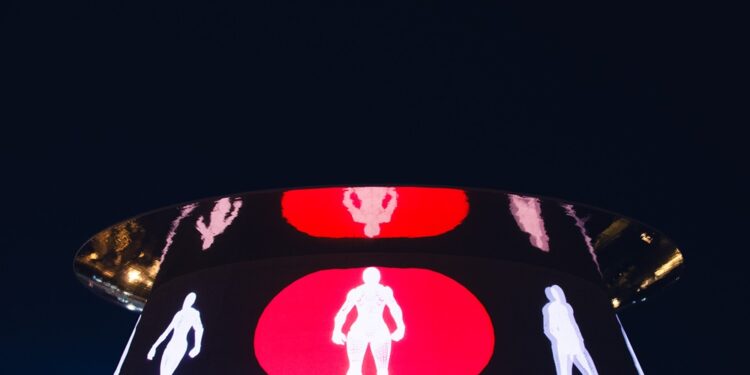When the golden pavilion known as Shining Hat awakens each night on Yumeshima Island, waves of turquoise and amber race across 60 meters of aluminum skin. The choreography isn’t triggered by a timer—it’s driven by a musical score that pulses through twin 40,000‑lumen laser projectors. The architect of both the music and the visuals is LEOW (Dian Wang), a 38‑year‑old artist from Shanghai whose new grand projection‑mapping work, “Future Weave,” has become the crown jewel of EXPO 2025 Osaka’s after‑dark program. The piece loops twice nightly, at 7:30 p.m. and 8:10 p.m., from April 13 to October 13.

From Film Scoring to Spatial Art
Trained in film scoring during postgraduate study in the United Kingdom and later working at Los Angeles‑based Remote Control Productions, LEOW learned early that “narrative lives inside sound.” Yet the flat cinema screen felt too small. In 2021 he founded Asian Tribe Project, an interdisciplinary collective that pairs coders with musicians and visual artists. The group has tackled UNESCO‑listed cliff faces and digital planetariums, but Future Weave is LEOW’s first World Expo commission and the largest civic canvas he has handled to date.
Building the “Loom”
To weave music into architecture, LEOW assembled a three‑tier team he calls a loom:
- Jason Li — 3‑D artist who built the spatial narrative lattice
- Liu Huiwen — bio‑visual designer introducing fractal growth algorithms
- Guo Xiaotong — color‑flow artist blending Pantone gradients into emotional tides
More than 300 audio stems were fed into Houdini and TouchDesigner pipelines, generating a virtual cloth of light that folds, ripples, and unfurls in lockstep with cymbal cracks and bass hits. “Think of it as musical origami at city scale,” LEOW says.
Why It Matters to New Yorkers
World Expos may feel remote, but Future Weave points to trends already reshaping U.S. public space. Times Square’s digital billboards, the LED‑wrapped facades appearing on Hudson Yards towers, and waterfront projection festivals in Brooklyn all hint at a future where architecture earns a second life after sunset. What sets LEOW’s work apart is that it treats the building as an instrument, not a screen.
“Our skyline is fixed during the day,” he notes. “At night, it can improvise.”
For a city that prizes cultural capital as much as real‑estate value, a façade that performs rather than advertises could be more than artistic whimsy—it could be an economic invitation.
Music vs. Simulation
Where many tech giants chase ever sharper photorealism, Future Weave argues that rhythm may be the more powerful connector of people, technology, and environment. Visitors under Shining Hat often feel the beat through their feet before they perceive the image with their eyes; the sensation is closer to a club floor than an amusement‑park light show. By letting music lead, LEOW suggests a path where digital art augments, rather than imitates, reality.
What’s Next: The Tension Between BIG and SMALL
LEOW frames his practice around the dialectic of “BIG and SMALL.” The “BIG” is civic‑scale projection; the “SMALL” is the intimate, framed work you can hang in a hallway. Later this year he will debut Superreal Stitching, a series that fuses Suzhou embroidery with generative imagery, and stage a collaborative exhibition with renowned Japanese floral artist Plantica | Takashi Kimura. “BIG owns the system; SMALL feels its shift,” he says—a line that surfaces often in his sketchbooks.
If You Go
- Location: Shining Hat Pavilion, Yumeshima Island, Osaka
- Run: Nightly, April 13 – October 13 (7:30 p.m. & 8:10 p.m.)
- Access: Expo admission required; projection is free once inside
- Follow: Instagram @LEOWDDD for behind‑the‑scenes clips
In an era when a six‑inch phone can eclipse a sixty‑story tower, Future Weave flips the script. Stand beneath a 60‑meter‑tall metronome of light, and the concrete and steel of any city—even New York—might suddenly seem too still.




